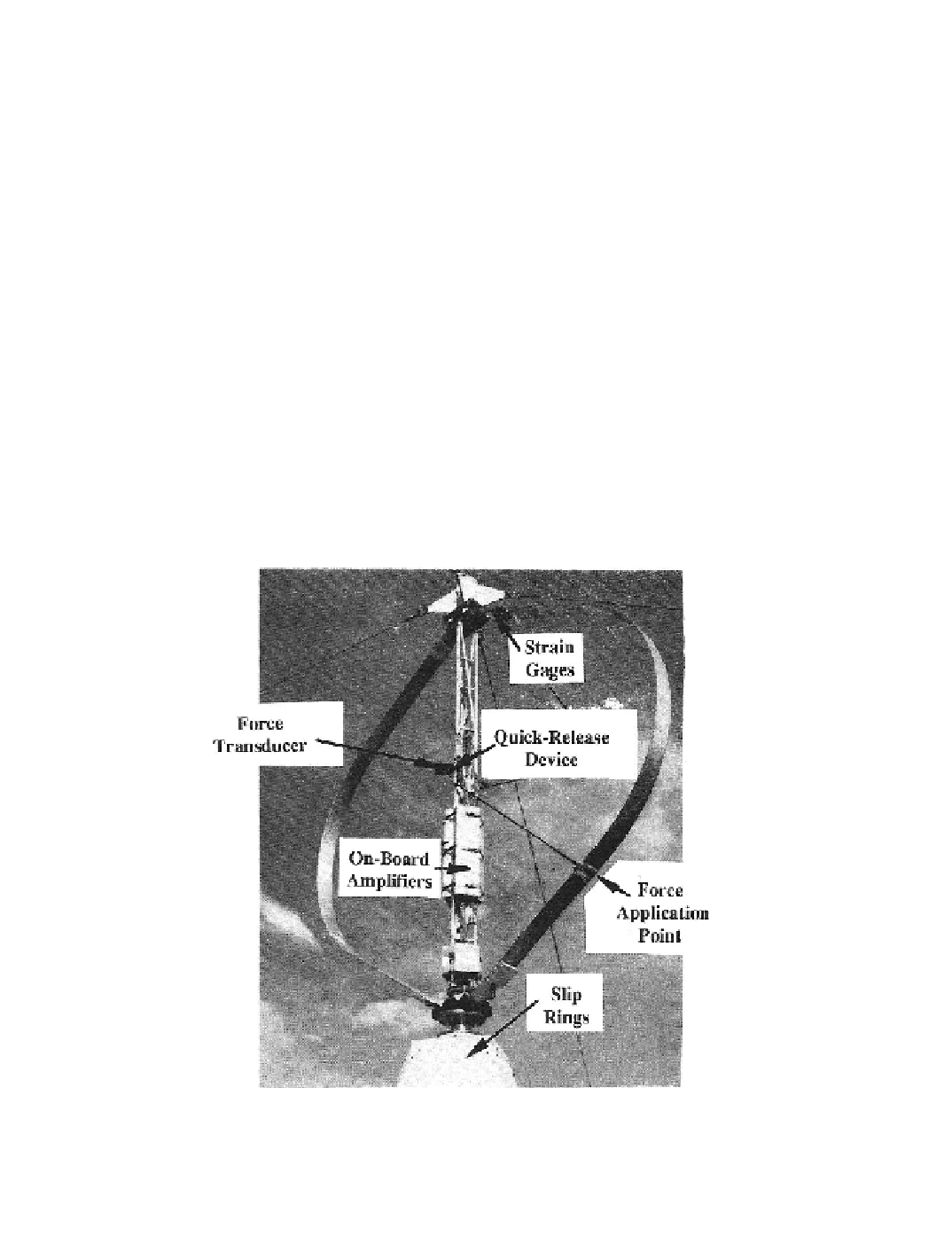Environmental Engineering Reference
In-Depth Information
Sample Theoretical Modal Analysis
In this sample modal analysis, taken from Carne
et al.
[1982], modal shapes and fre-
quencies are determined for the
Sandia/DOE 2-m VAWT
shown in Figure 11-7. The
configuration of the finite-element model of this VAWT is shown in Figure 11-8. The
model is composed of two blades, a central column, and elastic supports. The curved
blades are modeled with 20 beam elements each. The truss column, which adds a fair
degree of complexity to the model, is represented by 150 beam elements. The masses of
the hardware associated with the upper bearing and its support-cable connections are repre-
sented by a single concentrated mass placed at the top of the truss model. The support
cables are modeled with horizontal, linear springs and a vertical downward force on the
truss, as shown in Figure 11-8.
The masses of the test instrumentation installed on the rotor (which are not negligible
compared to the mass of the blades) are included by adding appropriate concentrated
masses. The base structure is modeled as a concentrated mass in combination with torsional
and linear springs. The horizontal springs at the upper and lower bearings have equal
stiffnesses in two orthogonal directions, producing the desired isotropic boundary conditions
typical of VAWTs. The stiffness and mass properties of the support system must usually
be estimated, at least to some degree. The initial estimates for this model are given in
parenthesis in the figure. The final properties of the supports were obtained by “tuning” the
model to match frequencies measured when the VAWT was not rotating, as will be
discussed in the next section.
Figure 11-7. Sandia/DOE 2-m test VAWT with typical modal-survey instrumentation
and excitation devices.
(
Courtesy of Sandia National Laboratories
)

Search WWH ::

Custom Search